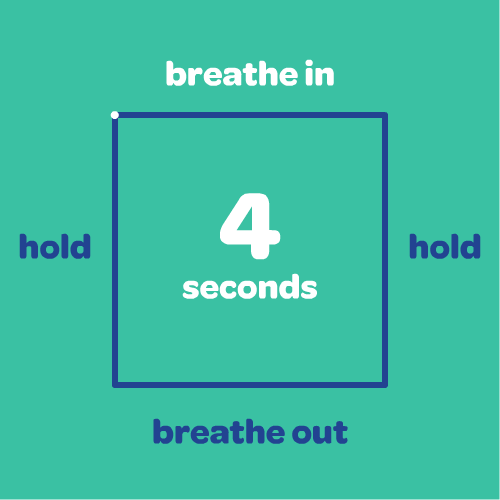/mothersopedia/media/media_files/B1TCQT8LKMFiIS8ynsLr.png)
Deep Breathing Techniques for Relaxation, Stress Relief, and Wellness
Deep Breathing techniques can be a very beneficial exercise for everyone of all ages in various aspects of their lives, promoting relaxation, stress reduction, and overall well-being, Especially If you are a woman, and a new mom, stressed out with new things, facing and embracing new changes, and challenges You must need practices, or techniques to promote relaxation and rejuvenation and reduce stress to improve your bond with your baby, body and your family.
Deep Breathing Exercises/Techniques for Stress Management and Relaxation.
Deep Belly Breathing: Also known as diaphragmatic breathing, this technique involves taking slow, deep breaths that fully expand the belly. It helps to activate the body's relaxation response, reduce stress levels, and promote a sense of calm. Not surprisingly, this type of breathing slows the heartbeat and can lower or stabilize blood pressure, which is usually a concern for women of later ages and new moms of course.
/mothersopedia/media/post_attachments/mdKtqs8YaR6qEhK0JoJU.png)
Alternate Nostril Breathing: This technique involves inhaling and exhaling through one nostril at a time while closing the other nostril with your finger. It helps to balance energy, improve focus, and calm the mind. Alternate-nostril breathing can make your lung muscles stronger. Try to do five minutes of alternate nostril breathing per day to reap the most benefits. But be gentle with yourself if you can't get the hang of it right away.
/mothersopedia/media/post_attachments/unXj5UMSsQ52Ul3tr3Y5.jpg)
4-7-8 Breathing: This technique involves Inhaling through the nose for a count of 4, holding the breath for a count of 7, and exhaling through the mouth for a count of 8. It is known to induce relaxation, reduce anxiety, and promote better sleep. Must try for everyone of all age groups, start with your toddler too./mothersopedia/media/post_attachments/Ka4mVQ8xKuu5z5oARSYd.jpg)
Box Breathing: This technique involves inhaling, holding the breath, exhaling, and holding again, all for an equal count of time (e.g., four seconds each). It helps to regulate breathing, calm the mind, and increase focus. Studies show that regulating your breath can lower levels of the stress hormone cortisol and maybe even help lower blood pressure. Women who are facing challenges with their newborns, and are prone to postpartum depression must practice the Box-breathing technique to relax.

Ujjayi Breath: It is also known as Victorious breath, which is used in yoga, and involves breathing in and out through the nose while slightly constricting the back of the throat. It produces a soft, gentle sound and helps to regulate breathing, increase oxygen flow, and promote relaxation. With Ujjayi breath you breathe in and out of the nose with the lips sealed – no breath passes the lips. It allows you to calm your mind by focusing on your breath. This helps you override thoughts that could possibly distract you from your meditative state.
Humming Bee Breath(Bhramari pranayama): This breathing technique Relieves mental tension, anxiety, and insomnia, Helps reduce anger.
Inhale slowly & deeply through the nose, Exhale slowly through the nose & mouth closed making the humming bee sound. Let it be smooth and easy and do not exert pressure. Continue the practice for 10 rounds. Humming sound creates a soothing effect on the mind and the nervous system
This technique is best practiced on an empty stomach.
/mothersopedia/media/post_attachments/aM1FwAo1ctH2jpKC30jm.jpg)
Lion's Breath: Lion's breath is a type of pranayama that's said to alleviate stress, eliminate toxins, and stimulate your throat and upper chest. This technique involves inhaling deeply through the nose and then exhaling forcefully while sticking out the tongue and making a "ha" sound. It helps to release tension, relieve stress, and promote a sense of empowerment. Find your partner and do it together to reduce anxiety and stress.
/mothersopedia/media/post_attachments/mIaDR9MNPdBzdGpNeYWg.jpg)
Remember, these breathing techniques can be practiced at any time and in any setting. Whether you need to reduce stress, find focus, or recharge your energy, incorporating these techniques into your daily routine can support your overall well-being.
/mothersopedia/media/agency_attachments/DvAQhzwm8u9LzqFtI07D.png)
 Follow Us
Follow Us